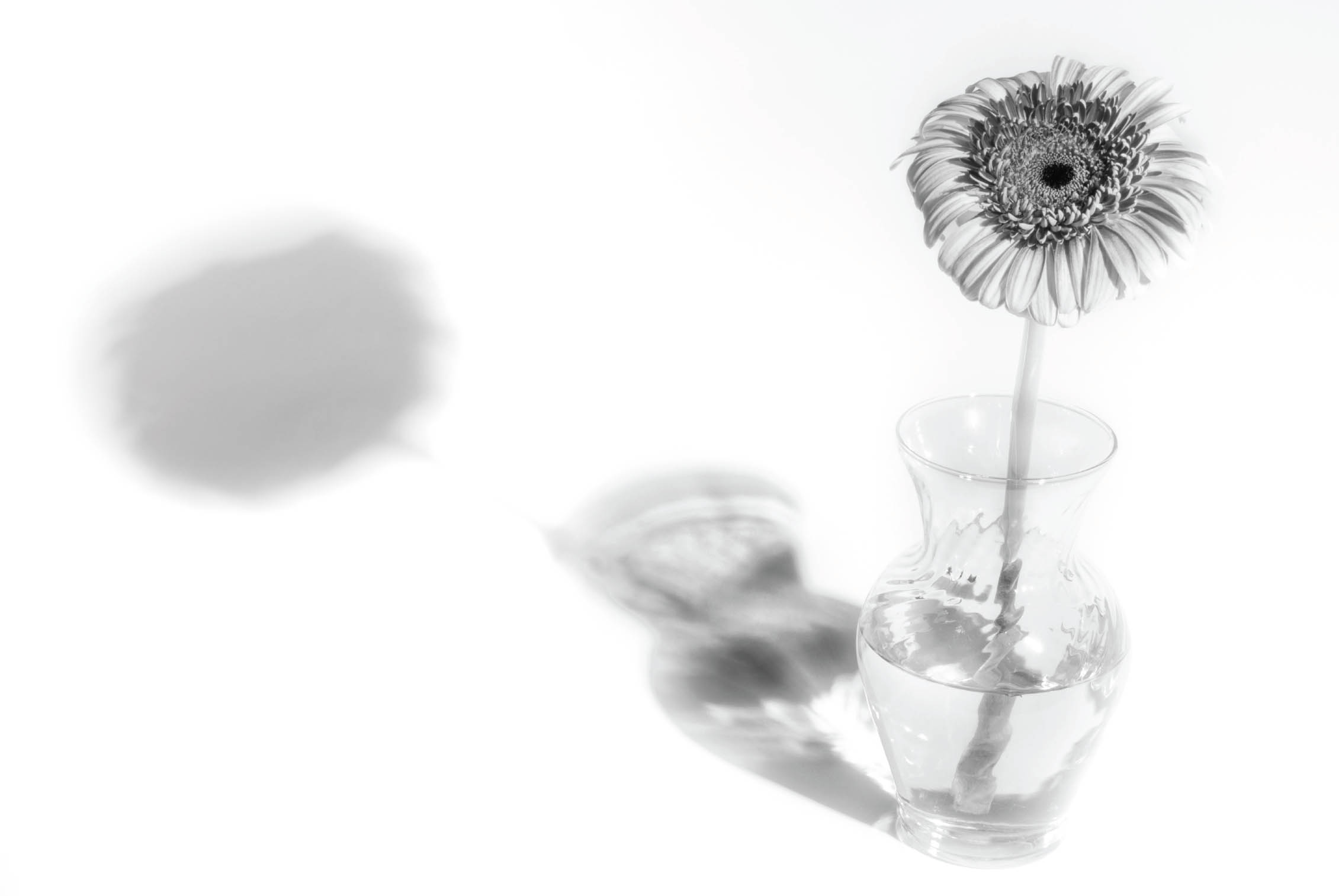High Key
I’ve already noted that black and white photography from a formal perspective is largely about the contrast between lights and darks (see pages 18–20). Powerful black and white compositions often require very dark blacks and very light whites—both in the same image.
It’s interesting that the opposite approach can also work well.
High-key photos are predominantly white, bright, and can be characterized as “overexposed”—an often incorrect characterization when the high-key exposure is intentional.
Low-key photos are largely black, or dark—and can easily, and often incorrectly, be considered underexposed (see pages 58–61). In these images, the single key predominates. Particularly with high-key imagery, there is seldom very much contrast at all.
To create a high-key image, look for a subject that is well lit and quite bright in tonal values. You may think this goes without saying, but if you look around, you may be surprised at how few compositions actually meet this requirement.
A high-key composition as a whole may work best if it operates by intrigue, mystery, and indirection. In some ways it may not matter that much what your actual subject is since high-key compositions can be built around many different kinds of subject matter. You should look for simple, evocative, subtle lines and shapes that evoke a sense of wonder in the viewer.
High-key effects can be created in postprocessing, although these after-the-fact techniques will not be appropriate for all photos (see pages 180–183).
It’s best to shoot with high-key in mind. This means intentionally overexposing compared to the camera’s idea of the “correct” exposure. It’s okay to bracket by shooting many frames at different exposures. That way you can pick the exposure that works best. I bet you’ll be surprised by how far to the overexposure side a high-key image needs to be. So don’t be timid about your overexposures when you are going for a high-key effect.
With a properly lit high-key image that is already creatively overexposed, exotic, and attractive, you can proceed to use the postprocessing techniques explained later in this book to amplify the impact of the effect.
Kellie—I posed the model against a white bed with the idea of creating a high-key effect by combining her light skin tone with the white of the bed sheets. This gorgeous model stood more than six feet tall without heels. The problem was getting her to feel comfortable.
So I decided to pose a challenge. I asked her to make herself look “as small as possible.” She did her very best to oblige and gave me an amused look that seemed to say “what is this crazy photographer up to”—hence the whimsical glance in this photo. Model: Kellie Krave.
Nikon D300, 38mm, 1/125 of a second at f/5.0 and ISO 100, hand held; converted to monochrome using Photoshop Adjustment layers.
Remembrance of Things Past—I set this vase and flower up on a white seamless background and lit the flower using a single light source to create an interesting shadow. Then I intentionally overexposed it to create a high-key, evocative, and dreamy effect.
Nikon D300, 55mm, 1/2 second at f/32 and ISO 200, tripod mounted; converted to monochrome using Photoshop Adjustment layers and Nik Silver Efex Pro.


